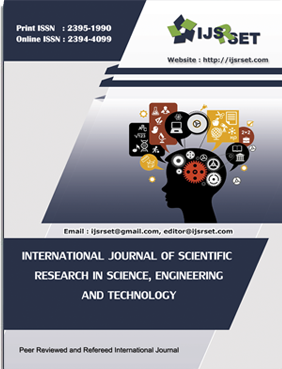Comparison of SARIMA, Bagging Exponential Smoothing with STL Decomposition and Robust STL Decomposition for Forecasting Red Chili Production
DOI:
https://doi.org/10.32628/IJSRSET2411146Keywords:
BES-STL, MBB, Red Chili Production, SARIMA, Time SeriesAbstract
Time series analysis enables the identification of trends and patterns in data, allowing for the development of forecasting models that predict future values. One effective approach for forecasting seasonal time series data is the Seasonal Autoregressive Integrated Moving Average (SARIMA) method. Bagging Exponential Smoothing with STL Decomposition (BES-STL) is an ensemble machine learning method aimed at enhancing forecasting accuracy. STL Method, which stands for Seasonal-Trend decomposition using Loess, is utilized to decompose time series data into three components, namely trend, seasonal, and remainder components. In the remainder component, the process of bootstrap aggregation (bagging) with Moving Block Bootstrapping (MBB) is used to obtain synthetic data, followed by averaging the value by month from the entire series as the forecast results. A comparative analysis was conducted using the SARIMA, BES-STL, and BES-RSTL models. The optimal model, with the lowest MAPE and RMSE, is then implemented to predict national red chili production. The results indicate that the SARIMA(1,1,1)(0,1,1)12 model has the best performance with a MAPE of 7.06 and a RMSE of 95,473. The top-performing model is utilized to forecast data from January to December 2022. Additionally, the forecasted results are compared to the actual data, resulting in a highly precise MAPE of 5.39.
📊 Article Downloads
References
Bergmeir C, Hyndman RJ, Benitez JM. 2016. Bagging exponential smoothing methods using STL decomposition and Box-Cox transformation. International Journal of Forecasting. 32(2016):303-312. doi:10.1016/j.ijforecast.2015.07.002. DOI: https://doi.org/10.1016/j.ijforecast.2015.07.002
BPS. 2020. Statistik Indonesia, Statistical Yearbook of Indonesia 2020. Jakarta: BPS.
Hyndman RJ, Athanasopoulos G. 2018. Forecasting: Principles and Practice. 2nd ed. Australia: OTexts.
Kementan. 2020. Outlook Cabai 2020. Jakarta: Kementan.
Maulana HA. 2018. Pemodelan deret waktu dan peramalan curah hujan pada dua belas stasiun di Bogor. Jurnal Matematika, Statistika dan Komputasi. 15(1):50-63. doi: 10.20956/jmsk.v15i1.4424. DOI: https://doi.org/10.20956/jmsk.v15i1.4424
Montgomery DC, Jennings CL, Kulahci M. 2015. Introduction to Time Series Analysis and Forecasting. 2nd ed. New Jersey: John Wiley & Sons, Inc.
Mu’tashim ML, Zaidiah A, Yulistiawan BS. 2023. Klasifikasi ketepatan lama studi mahasiswa dengan algoritme random forest dan gradient boosting (Studi kasus fakultas ilmu komputer Universitas Pembangunan Nasional Veteran Jakarta). In Proceedings of the Seminar Nasional Mahasiswa Bidang Ilmu Komputer dan Aplikasinya (Senamika). 4(1):155-166.
Wen Q, Gao J, Song X, Sun L, Xu H, Zhu S. 2019. RobustSTL: A robust seasonal-trend decomposition algorithm for long time series. In Proceedings of the Thirty-Third AAAI Conference on Artificial Intelligence (AAAI-19). 33(01): 5409-5416. DOI: https://doi.org/10.1609/aaai.v33i01.33015409





